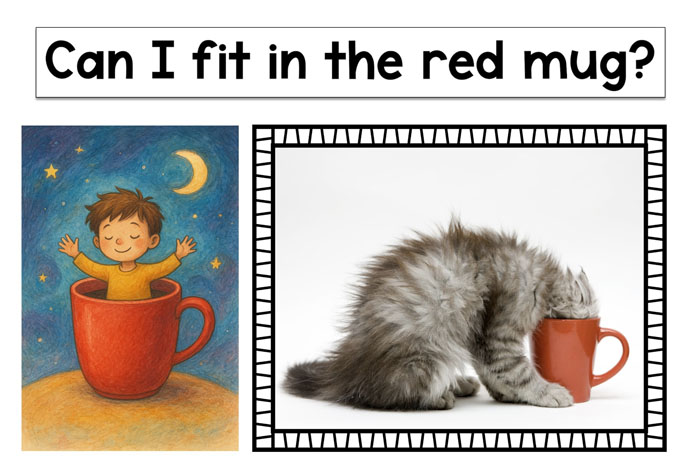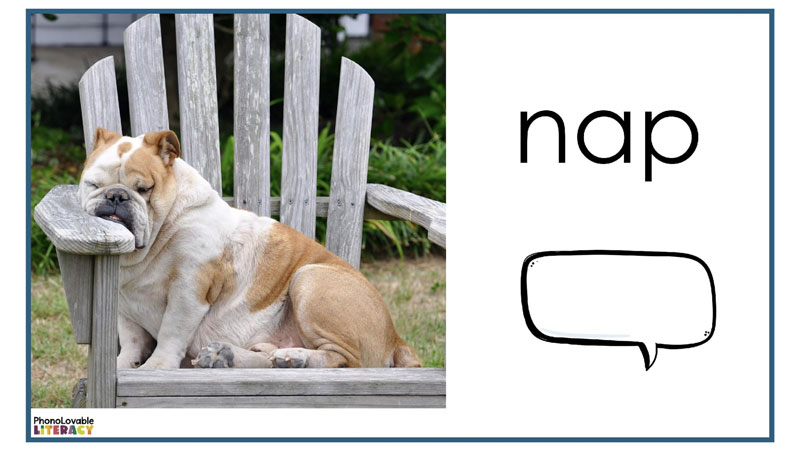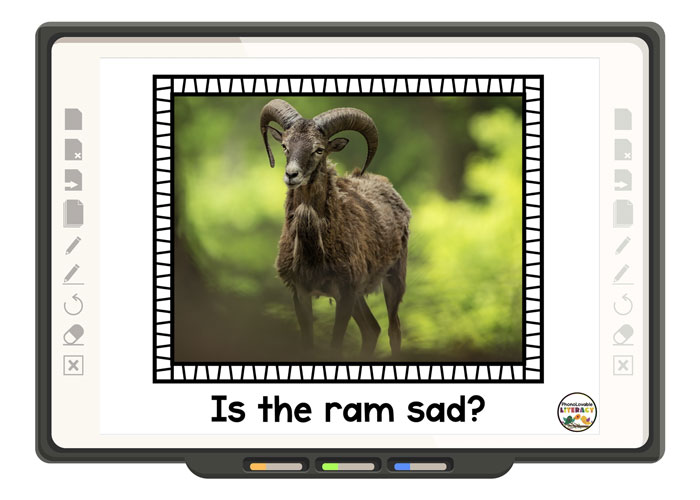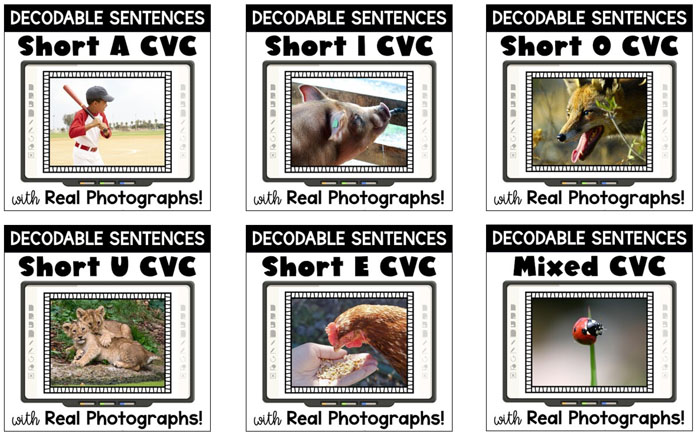Phonics instruction and comprehension don’t have to be mutually exclusive.
Of course we will use read-alouds from beautiful, meaningful picture books with rich language and important knowledge and empathy-building themes. But that doesn’t mean we completely neglect comprehension during our phonics-based lessons.
That’s why one of my main goals in developing structured literacy resources is to make them as relatable and as interesting as possible, especially when I create decodable sentences for kindergarten and first graders.
In my twenty-five years of teaching students how to read, I spent way too much time searching for decodable sentences and passages to supplement whatever curriculum I was using at the time.
My students often needed more practice at the sentence and passage level, and what I was finding either wasn’t enough or was just too awkward and meaningless. You know the sentences I’m talking about … “Kip did a jig.” Or “The tan cat did lap at the tap.”
Sometimes I’d find a resource with good sentences, but there’d be a picture included alongside it. I wanted to discourage the habit my students had of guessing at words using picture cues.
Or there’d be great sentences provided for each phonics pattern, but only two or three of them. I knew my at-risk readers needed more practice opportunities to become successful.
I’d also find plenty of sentences with no visuals at all. These were fine if I wanted my students to practice the important comprehension skill of visualizing in their mind.
But, I usually had more than a few students with limited English speaking and/or vocabulary skills. So having a real photograph available to show students AFTER they decoded the sentence would have been incredibly beneficial to support comprehension and oral language skills, giving us a base from which to discuss the sentence’s meaning.
If you’ve encountered similar problems in your structured literacy curriculum and need ideas and resources to build phonics skills without neglecting comprehension or engagement, I’ve got some recommendations for you.
1. Find or create sentences with natural-sounding language
This helps our English language learners and enhances meaning. Even better is if you make them relatable to your students. Most kids love food, animals, and games, so I try to include those topics as much as possible. Steer clear of awkward-sounding sentences that nobody would ever say or hear in real life, no matter how much it aligns with your phonics skill.


2. Explicitly teach and model the skill of visualization
Even at the basic sentence level, you can be intentional about teaching and modeling how to visualize.
I used to ask my students what they “saw” in their minds when they pictured the meaning of a sentence. I realized they were taking me too literally and would usually say, “I don’t see anything! It’s dark!”, thinking they were doing something wrong.
So now I begin by telling them that we have to actively imagine a movie in our minds. I start by having them close their eyes and “picture” their bedroom at home. Where is their bed? Are there stuffed animals on it? How many pillows? What color blanket? What is next to their bed? A lamp? A table? A desk?
I tell them even though the images may not be crystal clear, they can still usually “see” in their minds by actively using their imagination.
We should do the same thing when we read … turn the words into images in our minds to help us understand and remember what we read. THEN, we practice with a decodable sentence, reading the sentence silently, and then describing what we pictured in our minds.
3. Pair decodable sentences with real photographs
Real photographs are an excellent way to add real-world meaning to decodable sentences. Just make sure students don’t see them until AFTER they read the sentence accurately, so that they aren’t using picture cues to guess at words.
If you’ve ever worked with older students who went through years of balanced literacy lessons, you know this is a hard habit to break. I combine the visualization practice above with this step as well. After students read the decodable sentence and explain what they pictured, I show them a photograph of that sentence and ask them if it’s anything like what they pictured. It’s okay if it’s different … as long as it makes sense from the sentence.


4. Personalize it
No matter what we are reading about, I try to get my students to make a connection, either to themselves or a friend or family member.
Kids love to talk about themselves, so I encourage them to share how they made a connection to a decodable passage, sentence, or even a word.
Sometimes I use simple sentence starters. Here’s an example from my free Short A CVC Structured Literacy lesson. After students decode the word nap WITHOUT any picture in sight, they’ll see a real photo on the next slide. I’ll simply say, “My pet likes to nap on _____________” and ask for a volunteer to repeat and complete the sentence orally.


QUICKLY reinforce
You should quickly reinforce other previously taught comprehension skills in an integrated way.
I’m not talking about spending ten minutes analyzing a sentence, but just a brief example or question interwoven throughout your structured literacy lesson will get students in the habit of actively making meaning while reading.
For example, after students read this Short A CVC sentence …


… I might model or ask for an inference in response, after I show the next slide with the visual.


Again, I might use a simple sentence starter and ask for a student volunteer to repeat and complete it. “I can tell the ram is sad because ____________”.
Reading is more than just decoding
All of these activities remind students that the whole point of reading is understanding. Many of our students absolutely require the daily, explicit, systematic instruction and multiple practice opportunities included in our structured literacy lessons.
While providing this essential instruction in foundational skills, we can make our teaching even more impactful by implementing some or all of the strategies described above.
If you need resources to help you deliver this critical instruction, please check out the following to see what will best meet your students’ needs:
⭐ No-prep digital decodable sentences – 25 kid-friendly and meaningful sentences per skill.


⭐ Complete, no-prep structured literacy lessons for 41 skills from basic to advanced, including practice opportunities at the word, sentence, and passage level.


I wish your students much success and enjoyment as they improve their decoding AND comprehension skills!

